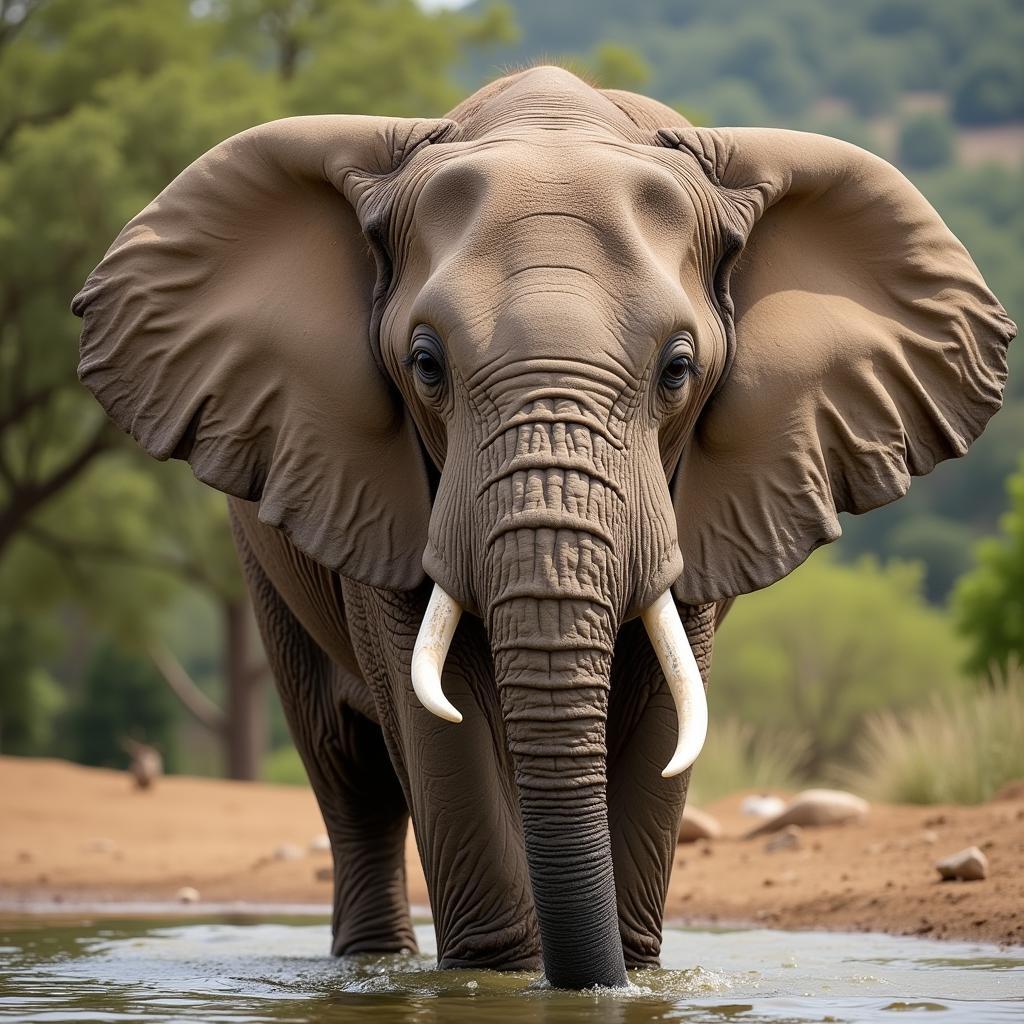African Five Animals and Their Adaptation to Survive
The African five animals—lion, leopard, elephant, rhinoceros, and Cape buffalo—are iconic symbols of the continent’s wildlife. These animals, known as the “Big Five,” have evolved incredible adaptations to survive in the diverse and challenging African environments. Their survival strategies, honed over millennia, are a testament to the power of natural selection. This article will explore the fascinating adaptations of the African five animals and their struggle to thrive in the wild.
One crucial element impacting the survival of the “Big Five” is their behavioral adaptations. These include complex social structures, hunting techniques, and defensive mechanisms. For example, lions hunt cooperatively, allowing them to bring down larger prey. Learn more about the fascinating 10 interesting facts about african lions.
The Majestic Lion: King of Adaptation
Lions, the apex predators of the African savanna, exhibit several key adaptations. Their tawny coat provides excellent camouflage in the golden grasslands, allowing them to stalk prey undetected. Powerful legs and sharp claws equip them for the chase and the kill. Their social structure, based on prides, facilitates cooperative hunting and defense against rivals. Male lions’ impressive manes attract females and intimidate competitors.
The Elusive Leopard: Master of Stealth
Leopards, known for their stealth and agility, have adapted to a variety of habitats, from savannas to forests. Their spotted coat provides camouflage in dappled light, making them nearly invisible to both prey and competitors. They are excellent climbers, often storing their kills in trees to protect them from scavengers. Their powerful jaws and sharp teeth allow them to take down prey much larger than themselves.
The Mighty Elephant: A Giant’s Toolkit
African elephants, the largest land animals, possess a suite of remarkable adaptations. Their large ears help regulate body temperature in the hot African sun. Their trunks serve multiple purposes, from grasping food and water to communicating and defending themselves. Their thick skin protects them from thorns and parasites. Discover more about african elephant behavioral adaptations.
 African Elephant Adaptation: Trunk and Ears
African Elephant Adaptation: Trunk and Ears
The Armored Rhino: Built to Endure
Rhinos, with their thick hides and imposing horns, are built for defense. Their poor eyesight is compensated by a keen sense of smell and hearing. They use their horns for defense against predators and for intra-species competition. The white rhino grazes on grasses, while the black rhino browses on leaves and shrubs, reducing competition between the two species.
The Resilient Cape Buffalo: Strength in Numbers
Cape buffalo, known for their aggressive nature and powerful build, thrive in herds. Their thick horns and strong bodies provide protection against predators. Their social structure, based on complex hierarchies, allows for cooperative defense and resource sharing. Explore the different adaptations of the african buffalo adaptations in the savanna. They are also surprisingly adaptable grazers, able to survive in a variety of habitats.
What are the unique adaptations of the African five animals?
Each of the Big Five possesses unique adaptations that allow it to thrive in its environment. Lions have cooperative hunting strategies, leopards are masters of camouflage and climbing, elephants have versatile trunks and large ears for thermoregulation, rhinos have thick skin and horns for defense, and Cape buffalo have strength in numbers and powerful builds.
How do the Big Five adapt to the African climate?
The Big Five have various adaptations to cope with the African climate. Lions’ tawny coats provide camouflage, elephants’ large ears regulate body temperature, and rhinos have thick skin to protect from the sun. Behavioral adaptations, like seeking shade during the hottest parts of the day, also contribute to their survival.
Conclusion
The African five animals, with their remarkable adaptations, represent the resilience and diversity of African wildlife. Understanding these adaptations helps us appreciate the intricate web of life on the continent and underscores the importance of conservation efforts to protect these magnificent creatures and their habitats. Learn more about other african animal species. The survival of the African five animals, intertwined with the health of the African ecosystems, depends on continued efforts to preserve their natural world.
FAQ
-
Why are they called the “Big Five”? Originally, the term referred to the five most difficult animals to hunt on foot.
-
Where can I see the Big Five? Many national parks and game reserves across Africa offer opportunities to see the Big Five.
-
What are some threats to the Big Five? Habitat loss, poaching, and human-wildlife conflict are major threats.
-
How can I contribute to Big Five conservation? Supporting reputable conservation organizations and responsible tourism are important steps.
-
Are there other animals with similar adaptations? Yes, many other African animals have evolved similar adaptations to survive in their respective environments. For more information on another fascinating African animal, check out the african antelope adda.
-
What is the role of the Big Five in the ecosystem? They play crucial roles as apex predators, herbivores, and ecosystem engineers.
-
How do their adaptations help them survive against predators? Adaptations like camouflage, horns, thick skin, and herd behavior provide protection against predators.
Other questions you might have:
- What is the social structure of each of the Big Five?
- How have their adaptations changed over time?
- What are the specific dietary needs of each animal?
Need help planning your African safari or want to know more? Contact us!
Phone: +255768904061
Email: kaka.mag@gmail.com
Address: Mbarali DC Mawindi, Kangaga, Tanzania.
We have a 24/7 customer service team.


